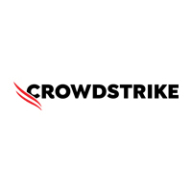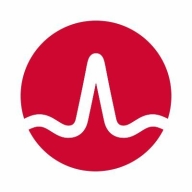

Symantec Endpoint Security and CrowdStrike Falcon compete in the realm of endpoint security solutions. Based on the detailed comparisons, CrowdStrike seems to have the upper hand due to its AI-driven approach and cloud-native capabilities, which often receive higher praise in user reviews.
Features: Symantec Endpoint Security offers comprehensive protection against various threats with features such as anti-virus, anti-spyware, intrusion prevention, and robust device control. It provides centralized management with an intuitive console for ease of administration. CrowdStrike Falcon distinguishes itself with its real-time monitoring and cloud-native architecture. It provides advanced threat intelligence that enhances security visibility and situational awareness, backed by a lightweight agent that minimizes performance impact.
Room for Improvement: Symantec users note improvements needed in resource consumption, zero-day threat detection, and user interface. Additionally, resolving support issues and managing the solution could be improved. Meanwhile, CrowdStrike users often report a high number of alerts that require tuning, desire for better integration, and the high cost of additional features. Both solutions could enhance forensic capabilities but Symantec often gets more feedback on resource-heavy operations.
Ease of Deployment and Customer Service: Deployment for Symantec Endpoint Security can be cumbersome due to its on-premises nature, whereas CrowdStrike Falcon offers a more efficient cloud-based setup. Both receive mixed reviews for customer support; however, Symantec’s support has seen a decline post-Broadcom acquisition. CrowdStrike’s cloud-first approach is appreciated for its minimal installation complexity and effective remote support.
Pricing and ROI: Symantec Endpoint Security is moderately priced yet considered costly compared to newer entrants. Users see the pricing as justified by its features but not always competitive. CrowdStrike is often seen as expensive, though its intelligent features and proactive protection can justify the cost. Both offer a positive ROI, enhancing security postures significantly.
CrowdStrike Falcon saves time and offers good value for money, especially for enterprise companies, because it can stop breaches.
It's very easy to deploy without many IT admins, saving time.
Symantec Endpoint Security filled gaps in our toolset, particularly with the ability to control network firewall on hosts remotely, which was greatly appreciated.
On a scale of one to ten, I would rate the technical support as a 10 because they resolve many issues for us.
The CrowdStrike team is very efficient; I would rate them ten out of ten.
They could improve by initiating calls for high-priority cases instead of just opening tickets.
In some cases, it rates as high as ten out of ten, while in others, it can be as low as eight.
There is no support in the German language, which is a problem for many public tenders.
It has adequate coverage and is easy to deploy.
In terms of scalability, I find CrowdStrike to be stable, and I have not encountered any limitations with it.
There's no scalability limitation from CrowdStrike itself, as it just requires agent deployment.
Symantec Endpoint Security is quite scalable, and it is very important for large clients.
The scalability of the servers is good, as it requires computational powers.
I have never seen instability in the CrowdStrike tool.
We are following N-1 versions across our environment, which is stable.
The biggest issue occurred when every computer worldwide experienced a blue screen.
I have encountered issues where I had to uninstall and reinstall the product on end users' computers to view the logs again.
Previously, we used to have multiple servers such as GUP servers and numerous servers for pushing updates, but we reduced it and transitioned almost 30,000 devices to CrowdStrike, which was easy to manage.
Simplifying the querying process, such as using double quote queries or directly obtaining logs based on IP addresses or usernames, would be beneficial.
Another concern is CrowdStrike's GUI. It changes annually, making it hard to work and find options.
Threat prevention should be their first priority.
Device management is not very good and I am not enabling it in my organization due to security reasons.
I would like to see improvements in the scanning part of the solution, specifically to enhance the CPU and hard disk usage during scanning and updates to prevent disruption during work hours.
It is cumbersome to use, particularly in handling firewall management.
It is expensive compared to SentinelOne, but as the market leader, it is worth it.
The licensing cost and setup costs are affordable.
The solution is a bit expensive.
It seems to be half the cost or more affordable than other solutions.
The pricing is very low compared to other companies like SentinelOne and others.
I rate the pricing, setup cost, and licensing around nine out of ten.
I can investigate by accessing the customer's host based on the RTR environment and utilize host search to know details for the past seven days, including logins, processes, file installations, malicious processes, and network connections.
The real-time analytics aspect of CrowdStrike performs well because we get all logs in real-time, with no delay, allowing us to take action immediately.
Being an EDR solution, it helps us identify attacks in real-time.
Symantec Endpoint Security offers great features such as reporting capabilities with a customized dashboard that pulls in EDR timelines, threat maps, and compliance metrics into one view.
Symantec Endpoint Security offers many valuable features, such as file explosion, application learning, DLP, injection detection, and EDR solutions for traffic control.
The incident response capabilities allow me to resolve authentication and support issues promptly, ensuring the system operates without downtime.
| Product | Market Share (%) |
|---|---|
| CrowdStrike Falcon | 7.0% |
| Symantec Endpoint Security | 3.4% |
| Other | 89.6% |


| Company Size | Count |
|---|---|
| Small Business | 46 |
| Midsize Enterprise | 34 |
| Large Enterprise | 62 |
| Company Size | Count |
|---|---|
| Small Business | 69 |
| Midsize Enterprise | 32 |
| Large Enterprise | 63 |
CrowdStrike Falcon provides cutting-edge endpoint detection with automatic alerts, real-time monitoring, and seamless integration capabilities. Cloud-native architecture and AI-driven processes ensure scalable protection and efficient threat remediation.
CrowdStrike Falcon is recognized for its robust EDR and threat intelligence features that enhance security and streamline operations. Its lightweight agent minimizes system impact while offering real-time monitoring and detailed reporting. This platform uses cloud-native architecture for scalable, consistent protection, significantly reducing administrative demands. AI and machine learning empower precise threat hunting and behavioral analysis, which mitigates false positives and boosts cybersecurity efficiency. Users seek improvements in integration with other systems, reporting functions, and compatibility with specific operating systems. While the solution handles malware mitigation and threat response efficiently, suggestions for on-demand scanning, enhanced visibility, and better dashboard features are noted.
What are the key features of CrowdStrike Falcon?In technology sectors, CrowdStrike Falcon commonly supports endpoint protection and threat response initiatives, allowing companies to replace traditional antivirus systems with more advanced solutions. In finance, it secures sensitive data across multiple platforms, ensuring compliance. In healthcare, real-time security analysis protects patient data on critical devices like servers and laptops, utilizing AI to enhance cybersecurity defenses.
Symantec Endpoint Security is a robust and reliable product that provides complete protection against viruses, malware, Trojans, and malicious files. It offers application and device control, ease of use in deploying and updating, a central control console, stability, scalability, auto-discovery capabilities, patch management, endpoint detection and response capabilities, intrusion detection module.
The Symantec Global Intelligence Network (GIN) provides threat intelligence and detection across endpoints, email, and web traffic. It has helped organizations reduce downtime, increase productivity, and improve security posture. Symantec Endpoint Security is easy to use, has a flexible administration, and offers more value than expected.
We monitor all Endpoint Protection Platform (EPP) reviews to prevent fraudulent reviews and keep review quality high. We do not post reviews by company employees or direct competitors. We validate each review for authenticity via cross-reference with LinkedIn, and personal follow-up with the reviewer when necessary.